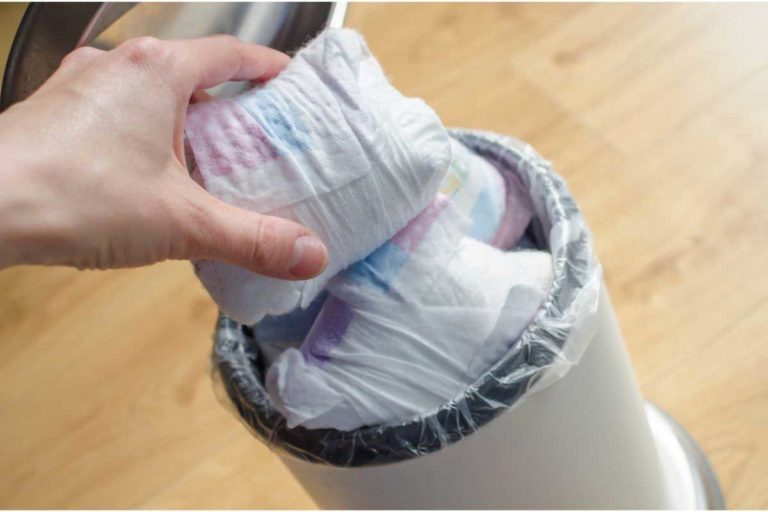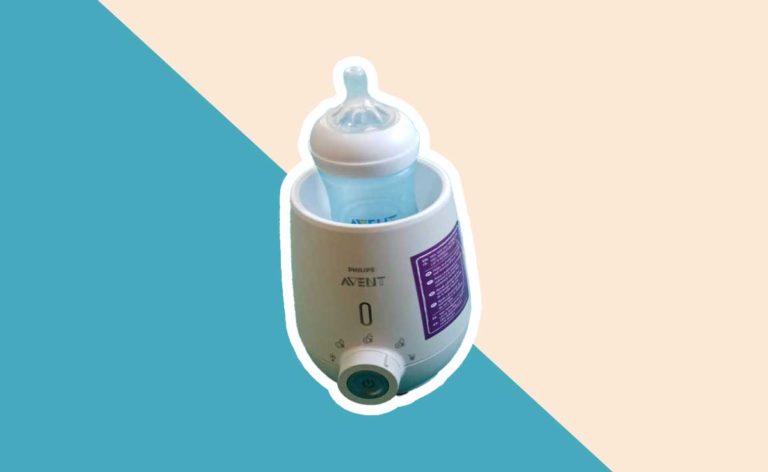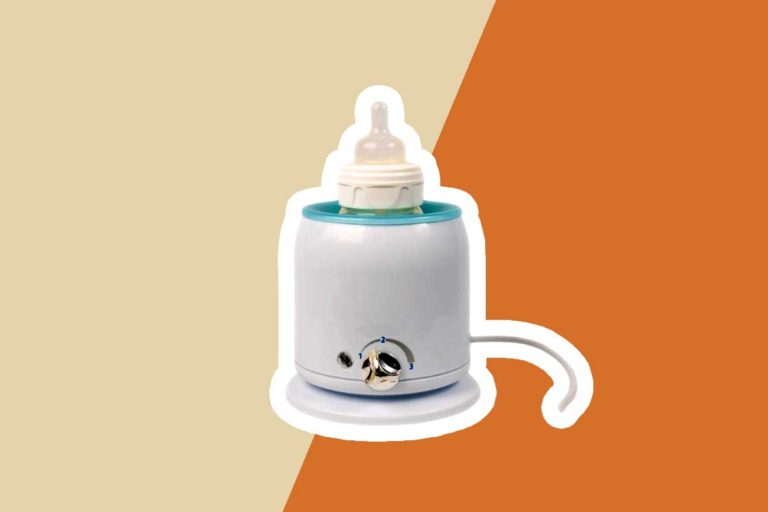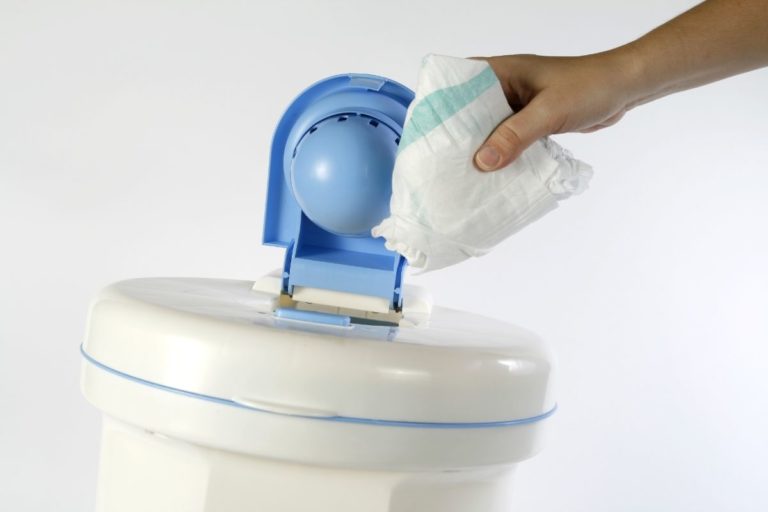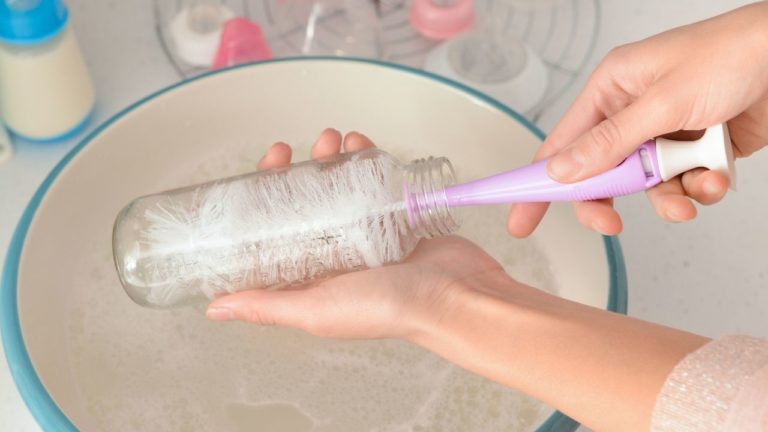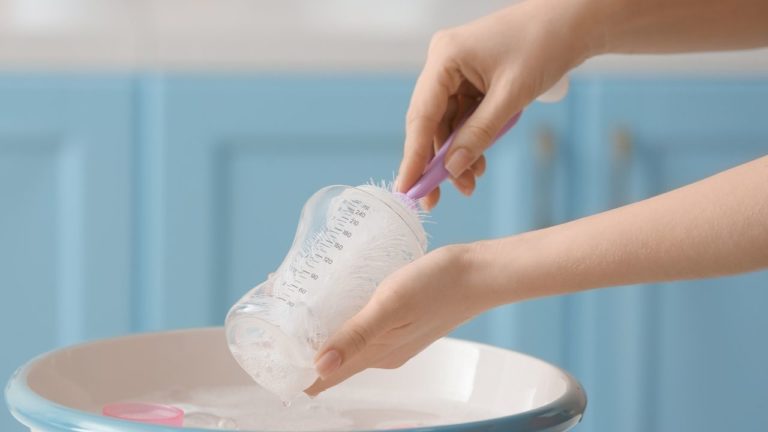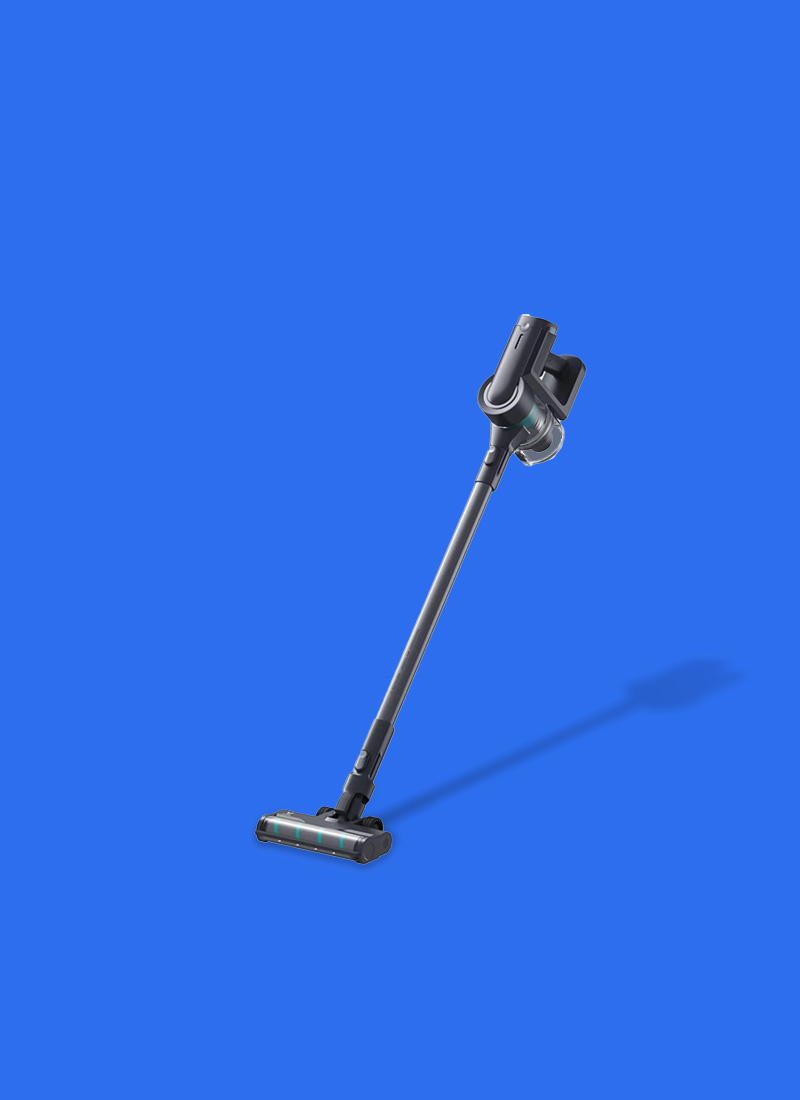ⓘ We are reader-supported and may earn a small commission at no additional cost to you if a purchase is made through one of our links.
Learn what makes nappy bins smell bad and how often you need to clean yours. We’ll also discuss six safe and effective tips to manage odor and keep your bin sanitary.
If you don’t have time to read the full article, click on the links to skip to that section:
Do nappy bins smell?
Nappy bins do indeed smell, largely due to their content. Nappies are filled with human waste that contains bacteria and other substances that, when left to sit, can easily build up and cause a potent odor.
At the beginning, infant diapers may not smell so bad because they’re still exclusively on formula or breastmilk. But as children get older and start eating solid food, their waste naturally becomes smellier.
In addition to the bacteria in the waste itself, other contents such as soiled wipes can add to the odor of the nappy bin. Finally, improper cleaning and sanitation practices will worsen the odor issue.
If you’re interested in buying a nappy bin, then check out our roundup of the best nappy bins.
How often should I clean my nappy bin?
It depends on the circumstances, but try cleaning the nappy bin at least once a week, and doing a deep clean every two weeks.
And if you have multiple children in nappies, you should be cleaning your bin as often as possible.
It’s important to remember that simply changing out the liner is not enough—the bacteria will still be present unless you thoroughly sanitize the container itself.
Otherwise, harmful bacteria and germs can quickly build up inside the bin, especially when it’s kept in a warm environment like a bathroom or nursery.
This is especially true if your child has an active yeast infection or diaper rash. Increased skin-to-skin contact between baby and diaper may increase bacterial growth in the container.
6 Tips to Stop a Nappy Bin from Smelling
It’s no secret that changing diapers can be, well, stinky. The good news is that you don’t have to live with diaper pail odours in your home.
Here are some easy ways to keep things fresh and hygienic even when you’re dealing with a dozen or more dirty diapers a day:
1. Invest in a high-quality nappy bin.
A regular trash bin just won’t do—nappy bins have special features designed to trap smells and keep things sanitary in your home. These include:
- Activated carbon filters
- Lid locks
- Water reservoirs for absorbing moisture
- Anti-microbial coating
- And more
Using a great nappy bin is already half the battle won, especially when you combine it with other odor-fighting tips below.
2. Avoid overfilling and compacting your nappy bin.
It’s tempting to just cram in one more nappy, especially when the bin is almost full, but this can cause compaction of the soiled items and lead to an overflow of waste and smells.
Try not to overfill your nappy bin and make sure you give the contents room to breathe by gently placing and spreading the items inside the bin.
3. Empty the bin regularly.
If you leave soiled nappies in the bin too long, they will start to smell bad no matter what you do. Make sure that you stay on top of emptying your nappy bins by setting regular intervals for changing them out.
This will depend on how much your bin can hold, because some nappy bins can store as many as 30 more diapers.
A good rule of thumb is to empty it once it’s nearly 95% full, so you can still tie up the liner easily and safely.
4. Use rip-resistant bin liners.
You don’t want to have any accidents with a nappy bin bag, so you should use a thick, durable, and rip-resistant plastic liner.
Your baby is going to produce a lot of waste in their diapers, and the liner needs to be able to hold up to that kind of pressure without splitting or tearing. You’ll also want one that can contain substances like pee and poo without leaking.
5. Use deodorisers to keep the smell down.
There are a number of different ways you can use deodorisers to help keep your nappy bin smelling as fresh as possible in between cleanings.
Here are a few:
Baking soda or baking powder
Baking soda and baking powder contain alkaline ingredients that help neutralize odours.
Sprinkle them in the bottom of your nappy bin when it starts to smell—or just pour some on top of each dirty diaper before you toss it in.
You can also mix a little into your laundry detergent for an extra boost of smell-reducing power.
Scent sachets
Scent sachets are small bags filled with dried plant materials or perfumed oils that release a pleasant aroma when they’re exposed to air. You can hang a sachet on the side of your nappy bin or taped inside.
They’re cheap and easily available at most grocery stores.
Lemon, orange, and other citrus-scented sachets are terrific at neutralising unpleasant smells.
Deodorising Sprays
Deodorising sprays are a quick and easy way to eliminate odours that linger in your nappy bin. Simply spray directly into the bin when it’s empty, and allow it to dry before placing a liner back in.
When choosing a deodorising spray, look for products that are made from natural ingredients, such as essential oils.
You can choose between thousands of scents, from fruity smells like peach and mango to floral scents like jasmine and lavender.
Some even come with special features, like bug repellant or aromatherapy properties.
Charcoal filters
If you want to keep things as natural as possible, try charcoal filters. Activated charcoal has been used for centuries as an air purifier and deodoriser, so it’s perfect for stinky nappy bins.
You can find filters that hang over the rim of the bin (they still allow the lid to close), or filters that fit inside the lid and absorb odours that way.
Some nappy bins also come with built-in charcoal filters, so that’s a more convenient option to consider.
6. Deep clean your nappy bin regularly.
Since babies go through so many diaper changes a day, it doesn’t take long before a clean bin is crawling with potentially harmful germs and bacteria.
Deep cleaning your bin keeps this under control by disinfection. Try to do this regularly, at least twice a month or more if you can.
Here are the basic steps:
- Step 1: Empty the bin. Make sure to dispose of all waste properly, either in the garbage or in a composting system.
- Step 2: Give the inside of the bin a thorough rinse with hot water. You can use a soft-bristle brush to scrub at particularly stubborn stains or odors.
- Step 3: Add some detergent and scrub away any residue left behind. Rinse thoroughly with hot water again.
- Step 4: Use a disinfectant spray or solution to sanitize the entire inside of the bin, including any ridges or corners where bacteria might be hiding. Allow to air dry completely before putting it back into service.
Conclusion
When you have a baby, maintaining your nappy bin becomes an essential part of keeping a clean and odour-free home. The good news is that it doesn’t take much to keep your nappy bin in great shape with the help of a few products and a regular cleaning routine.

